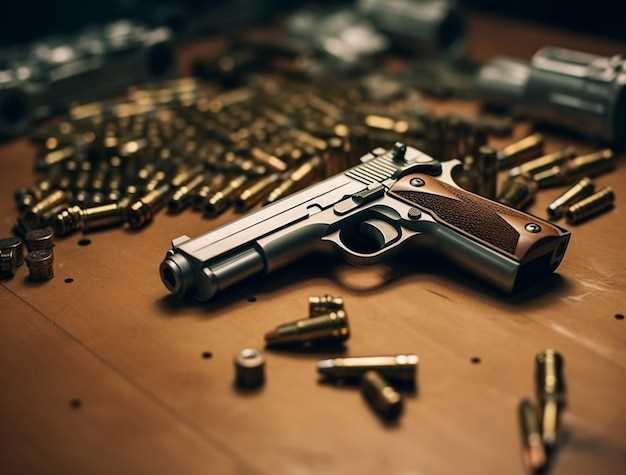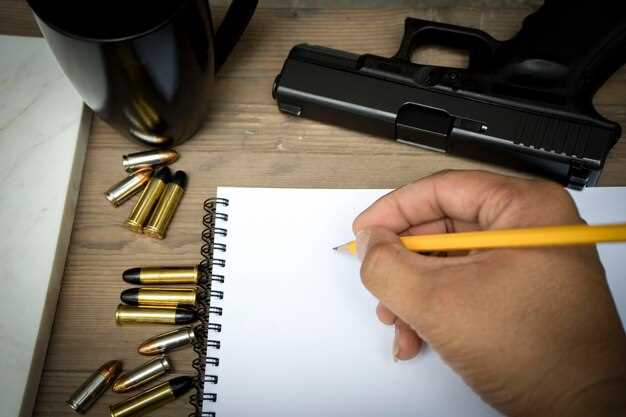
Basic gun safety rules for the range

When it comes to shooting sports, safety is the paramount concern for both novices and experienced marksmen alike. Understanding and adhering to the fundamental rules of gun safety can mean the difference between a successful day at the range and a tragic accident. The following guidelines are not merely suggestions; they are essential principles that every shooter must commit to memory and practice consistently.
At any shooting range, the environment is designed to facilitate practice while minimizing risk. However, the responsibility for maintaining safety lies with each individual. This article will outline key rules that govern safe shooting practices, ensuring that your time spent on the range is both enjoyable and incident-free. By being aware of the basic protocols, shooters can contribute to a culture of safety, respecting themselves, their fellow shooters, and the facilities around them.
Understanding these rules prepares you not only for a better shooting experience but also equips you with the knowledge necessary to respond appropriately in the event of an emergency. Whether you’re a casual participant or aiming to improve your skills, a solid grasp of gun safety principles is vital to fostering an environment where everyone can safely enjoy the sport of shooting.
Prioritizing Muzzle Control to Prevent Accidental Discharges
Muzzle control is a critical aspect of gun safety that every shooter must prioritize at the range. It involves maintaining awareness of the direction in which the firearm’s muzzle is pointed at all times. Proper muzzle control helps prevent accidental discharges, which can lead to serious injuries or fatalities. Shooters should consistently ensure that their firearm is pointed in a safe direction, typically downrange, during all handling and shooting activities.
One effective way to practice muzzle control is by adopting the “four rules of gun safety,” particularly focusing on the first rule: always treat every gun as if it is loaded. This mindset instills a habit of cautious handling, reducing the risk of accidental discharges. Even if a shooter believes their gun is unloaded, adhering to this principle ensures that they maintain control over the muzzle at all times.
Additionally, shooters should avoid pointing their muzzle at anything they do not intend to shoot. This principle is essential not only during shooting but also while holstering, reloading, or handling the firearm. By keeping the muzzle pointed away from people and sensitive areas, the risk of an inadvertent discharge causing harm is significantly reduced.
Training can enhance muzzle control skills. Participating in supervised shooting sessions and practical firearm training courses emphasizes the importance of safe handling. Experienced instructors can provide valuable feedback and reinforce the significance of maintaining proper muzzle direction throughout the shooting experience.
Ultimately, prioritizing muzzle control is integral to ensuring safety at the range. Shooters are responsible for their firearms and must develop a disciplined approach to handling them. By committing to consistent attention to muzzle direction, they contribute to a safer shooting environment for themselves and those around them.
Understanding the Importance of Treating Every Firearm as Loaded

One of the fundamental rules of gun safety is to treat every firearm as if it is loaded. This principle is vital in creating a culture of safety at shooting ranges and in any environment where firearms are present.
Here are several reasons why this rule is essential:
- Prevention of Accidents: Many firearm accidents occur when individuals assume a weapon is unloaded. This assumption can lead to mishandling and tragic consequences. By always treating a gun as loaded, individuals are less likely to engage in unsafe practices.
- Enhanced Situational Awareness: Viewing firearms as loaded encourages heightened awareness. Shooters are more cautious in how they handle weapons, reducing the likelihood of negligence.
- Encouraging Responsibility: This mindset fosters a sense of responsibility among shooters. It instills the importance of checking the status of a firearm before handling it and reinforces safe practices.
To effectively implement this rule, remember the following:
- Always check if the firearm is loaded yourself before handing it to another person.
- Avoid pointing a gun at anything you do not intend to shoot, regardless of your assumption about its status.
- Keep your finger off the trigger until you are ready to shoot.
By internalizing the practice of treating every firearm as loaded, shooters can significantly increase overall safety. This rule serves as the foundation for all other safety protocols at the range, ensuring that everyone can enjoy shooting in a secure environment.
Establishing Clear Communication and Signaling Among Shooters

Effective communication is crucial for safety at any shooting range. Establishing clear protocols ensures that all participants are aware of which activities are taking place and when to exercise caution. This communication minimizes the risks associated with handling firearms and maintains a secure environment for everyone.
Before starting, it is essential to set up specific rules for signaling. For instance, using a standard set of hand signals can help convey important information without the need for shouting, which might distract or alarm others. Shooters should agree on these signals beforehand and practice them to guarantee that everyone recognizes their meaning.
One common practice is to designate a range officer who will manage communications and enforce safety regulations. This individual is responsible for giving commands, signaling the start and end of shooting sessions, and ensuring everyone understands the current status of the range. When the range officer raises a specific flag or sign, it should communicate clearly whether shooters are allowed to fire or if they need to bring their weapons to a safe position.
All shooters must also understand the importance of announcing intentions before engaging in any actions that could affect others. For example, stating “gun up” or “clearing my weapon” allows other participants to be alert and prevents any misunderstandings that could lead to accidents. Such clear communication fosters a culture of safety and accountability.
Lastly, regular drills or meetings to reinforce these safety rules can greatly improve communication at the range. By routinely practicing signaling protocols, shooters will develop a shared understanding, making it easier to maintain a safe and productive environment. Establishing clear communication and signaling ensures that all participants can enjoy their shooting experience while prioritizing safety above all.




